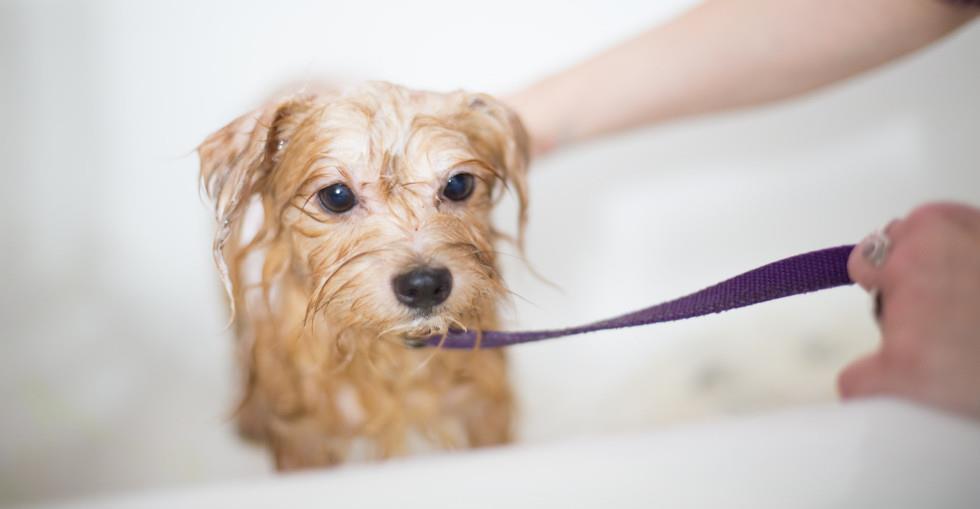The UK pet market is a multi-billion-pound industry, with pet owners constantly lavishing their animals.
Pets are often viewed as family members, reflected by the plethora of services and luxury items dedicated to animals. Now that your pet grooming business is already established, we'll offer some ways you can improve it.
Depending on your line of activity, you may groom a variety of animals. Whatever the case may be, they will all be unique.
If you own a dog grooming service, you're well aware that dogs vary in size, personality, and cleanliness. Through your grooming expertise, you've most certainly learnt the demands of each dog breed, how to account for them, and how to include them into your services.
If you work with other species, you must be prepared for a wide variety of creatures. You should be prepared to cope with any eventuality while dealing with animals.
You could start to collaborate and sell brands of shampoo and soap. Include extra style choices and other services as 'add-ons' to a standard grooming service.
You can also grow your business by adding a school or a programme in which dog owners can bathe their pets at the store. To diversify your services, try providing a boarding service too.
Understanding your competition
It is critical to determine if there is sufficient demand for a pet grooming service in your region. You should be aware that the industry of pet grooming has gotten highly competitive over the last several years, and you will almost certainly encounter competition.
Conduct a competitor analysis in your region to see how many other companies currently provide pet grooming services in your neighbourhood. A smart technique to determine the number of rivals in your region is to do a search on Yell.com or a similar directory, as well as conduct further web searches.
Take notes from Purplebone, a renowned dog groomer based in Notting Hill, London. It considers itself the top grooming salon in the city. Because the company uses an award-winning grooming crew, each dog gets the finest possible grooming. Purplebone is a cage-free habitat that is safe, soothing, and welcome. Their crew is capable of dealing with dogs of any temperament or breed.
Financial considerations
The appeal of a small grooming company is its low recurring expenditures.
Working from your house, a kennel or pet shop, or just visiting clients' homes avoids the need for expensive rent and utilities.
Cleaning supplies and advertising are your key continuous costs. While the exact charge varies according to your level of activity, it should cost no more than £100 or less per month to obtain a few gallons of shampoo/conditioner (which should cost no more than £20 or less per gallon and last approximately a hundred baths for most pets) and to replenish safety supplies and minor equipment.
Apart from that, you're paying for continuing advertising, which you should probably spend less than 5% of predicted yearly revenues on. Once established, the majority of your traffic will come from referrals, social media participation, and community networking.
- Interesting insights on the pet grooming industry
- According to the Pet Food Manufacturers' Association, 3.2 million families in the United Kingdom have adopted a pet since the pandemic began.
- The typical UK pet owner spends around £1,252 per year on their pet, and some dog owners even take their dogs to pilates courses!
- Britain's Millennials (aged 19-38) are most willing to invest attention in their animal companions, with 54% of these pet care customers stating that they would rather spend less on themselves.
Increase your marketing efforts
If you’re a start-up, you must raise awareness of your product or service in the market. You may market your dog grooming company in a variety of methods to increase sales and profitability.
Several advertising tactics worth experimenting with include the following:
- Advertise your pet grooming services in local directories and publications.
- Create a professional website and market it on search engines and social media, or even start a TikTok account to show off your adorable creatures.
- Organise a dog exhibition in your neighbourhood
- Develop mutually beneficial relationships with industry stakeholders such as veterinarians and share business information.
Employee considerations and training advice
Jobseekers' interest in pet-related vocations have increased, and searches for ‘dog grooming’ jobs were up by 65% in March 2021.
The increase in pet professional jobs is part of a broader trend of employment recovery, with vacancy rates returning to 78% of pre-covid levels. While certification as a dog groomer is not required, finishing a course in animal care and maintenance should be something an employee is willing to do to stand out.
City & Guilds dog groomer training courses are available at a variety of institutions and training centres around the country, and you can use them to improve the capabilities of your employees.
Deciding to sell your pet grooming business
At some point, you might decide that you want to exit your pet grooming business. For this process, you should factor in several aspects.
When valuing a pet business, consider the possibilities for expansion and the establishment of new markets. If a grooming business is situated in an area that has lately seen the construction of high-quality residential buildings, this may offer an untapped market. Likewise, it is important that you conduct an accurate valuation of your business using a trustworthy tool.
If you have collaborated with veterinary clinics or other pet-related sectors, boost your goodwill by having them recommend you. These factors might be used to increase market value.
Furthermore, the seller must supply financial records and tax returns of up to three years. Make a distinction between grooming income and retail revenue from the sale of treats, collars, and toys.

